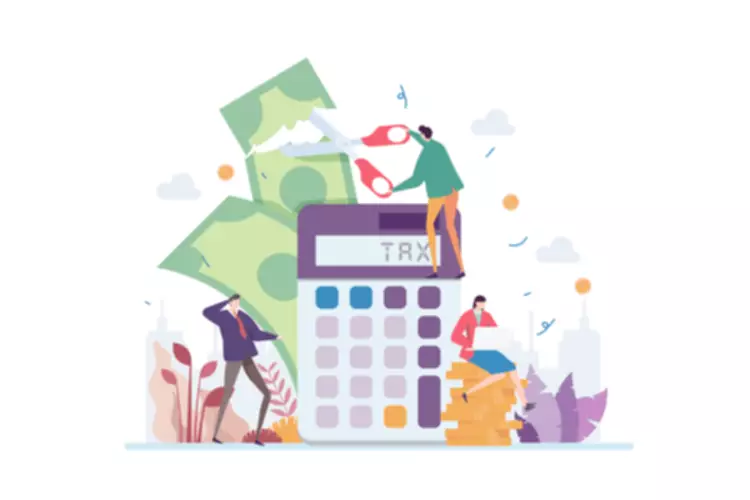Content

A bank or investing firm with a portfolio of investments, like tradable securities, may see its net worth drop precipitously as the companies it has invested in are failing. In reality, the picture of bank assets may not be as bleak, but the perception of depreciation may lead the institution to sell off their assets in order to increase their cash reserves. This can become a downward spiral that further fuels the economic crash or recession, as it did in the 1930s and in the recent subprime mortgage crisis. For example, a bank or other such institutional lender may have customers who default on their loans, which then turn into uncollectible bad debt. When the mark-to-market accounting method is used, the value of an asset is adjusted to show its value based on current market conditions. For example, mark to market accounting could have prevented theSavings and Loan Crisis. They listed the original prices of real estate they bought and updated prices only when they sold the assets.
- The main downfall of the mark-to-marketing accounting principle is that the fair value upon which two sides have agreed may not reflect the actual worth of an asset.
- The accounting rules for which assets and liabilities are held at fair value are complex.
- Mark-to-market accounting can become volatile if market prices fluctuate greatly or change unpredictably.
- This value is likely to be far less than the current market value the homeowners would obtain if they sold their property.
- Then, using an estimate of the percentage of customers expected to take the discount, the company would record a debit to sales discount, a contra revenue account, and a credit to “allowance for sales discount,” a contra asset account.
- There are two counterparties on either side of a futures contract—a long trader and a short trader.
This gain would be recorded as other comprehensive income in the equity section on the balance sheet, and it would also increase the asset, marketable securities, by the amount of the gain. When used in securities trading, mark to market consists of recording the value or price of a portfolio, account, or security so as to indicate the current market value instead of the book value. what is mark to market accounting Mark to market accounting forced banks to write down the values of their subprime securities. Now banks needed to lend less to make sure their liabilities weren’t greater than their assets. Mark to market inflated the housing bubble and deflated home values during the decline. The Federal Reserve noted that mark to market might have been responsible for many bank failures.
Mark-to-Market Accounting Cons
All other securities normally use the cash basis method of accounting where you do not realize a gain or loss for tax purposes until the year that you closed your position in that security. Only the most liquid securities subject to fair value accounting must be valued at direct market prices, according to Financial Accounting Standard 157.
A building owned by a company for decades, therefore, is likely to appear on the books at a much lower value than it would actually command in today’s market. This IASB amendment had an immediate impact on the financial statements of European banks. In the third quarter of 2008, Deutsche Bank avoided more than €800 million in losses from write-downs in its bond and marketable loan portfolios by shifting assets to a more favorable category. Through the magic https://www.bookstime.com/ of relabeling, Deutsche Bank reported a third quarter profit of €93 million, instead of a loss of more than €700 million. More generally, European banks shifted half a trillion dollars from other categories to held to maturity—boosting their profits by an estimated $29 billion in total for 2008. Some critics asked, How could actively traded bonds now be accounted for at historical cost if they were not purchased with the intent to hold them to maturity?
Examples of Fair Accounting Uses
Most important, a bank should disclose enough detail about the assumptions underlying its models to allow investors to trace how it reached valuations. But European politicians have much more leverage over the International Accounting Standards Board than Congress has over the Financial Accounting Standards Board, its U.S. counterpart. Before a new IASB standard can go into effect in Europe, it must be “endorsed” by three EU bodies—the European Parliament, the European Commission, and the EU Council of Ministers. Because of these three potential vetoes, the IASB is highly sensitive to threats from EU politicians to legislate their own accounting standards for European companies.
In summary, it is possible to use mark-to-market accounting on assets with a lower degree of liquidity, but it’s most common and easiest to use MTM accounting with assets that have an index-based current market price. The fair value of an asset is a sale price that is agreed upon by two willing parties—a buyer and a seller—who freely enter into a transaction with full cognizance of the asset’s value. Oftentimes, the fair value of an asset will be determined by a marketplace, such as the stock market, futures market, or real estate market.
Use in Personal Accounting
The daily mark to market settlements will continue until the expiration date of the futures contract or until the farmer closes out his position by going long on a contract with the same maturity. ● The fluctuating valuation figures that result from Mark to Market accounting and valuation create unnecessary budgeting problems. The budget process – already fraught with speculation – would have an even wider range of asset values and performance measurements with which to deal. On September 30, 2008, the SEC and the Financial Accounting Standards Board responded to the criticisms of the rule by issuing new guidance on mark-to-market accounting.
Meltdown 101: What is mark to market accounting?: NEW YORK (AP) — In all the finger-pointing about the .. http://twurl.nl/huiuwe
— newzhogg (@newzhogg) November 22, 2008
Mark to market may not give an accurate reflection of the value of an asset during volatile or difficult times. It can be useful for helping investors to meet margin requirements and for determining the amount of money they have made or lost in a day’s trading.
Kimberly Amadeo is an expert on U.S. and world economies and investing, with over 20 years of experience in economic analysis and business strategy. As a writer for The Balance, Kimberly provides insight on the state of the present-day economy, as well as past events that have had a lasting impact. Enron continued to claim future profits, even though the deal resulted in a loss.
The Sarbanes-Oxley Act also implemented harsher penalties for fraud, such as enhanced prison sentences and fines for committing fraud. Although the law was created to restore investor confidence, the cost of implementing the regulations caused many companies to avoid registering on stock exchanges in the United States. Mark-to-market or fair value accounting is accounting for the “fair value” of an asset or liability based on the current market price, or the price for similar assets and liabilities, or based on another objectively assessed “fair” value. Fair value accounting has been a part of Generally Accepted Accounting Principles in the United States since the early 1990s, and is now regarded as the “gold standard” in some circles.[which? Mark to market is a method of measuring the fair value of accounts that can fluctuate over time, such as assets and liabilities.
As a result, an accountant would start with the bond’s value based on Treasury notes. He would reduce the bond’s value, based on its risk as determined by a Standard and Poor’s credit rating. This can create problems in the following period when the “mark-to-market” is reversed. If the market price has changed between the ending period (12/31/prior year) and the opening market price of the following year (1/1/current year), then there is an accrual variance that must be taken into account. Mark-to-market losses are paper losses generated through an accounting entry rather than the actual sale of a security.

Naturally, this involves a long and short trader on each side of the contract. Enron was a conglomerate that specialized in energy production and commodities, eventually transitioning into certain financial services . The Enron scandal and its subsequent downfall isthestock market drama of the last several decades. Enron’s fall from grace cost thousands of Americans their jobs and shook up Wall Street. Stock prices plunged from more than $90 to 26 cents before they filed for bankruptcy. There’s no mystery as to how such a massive corporation disintegrated almost overnight—it’s because it had an outstanding history of deceptive business practices.



